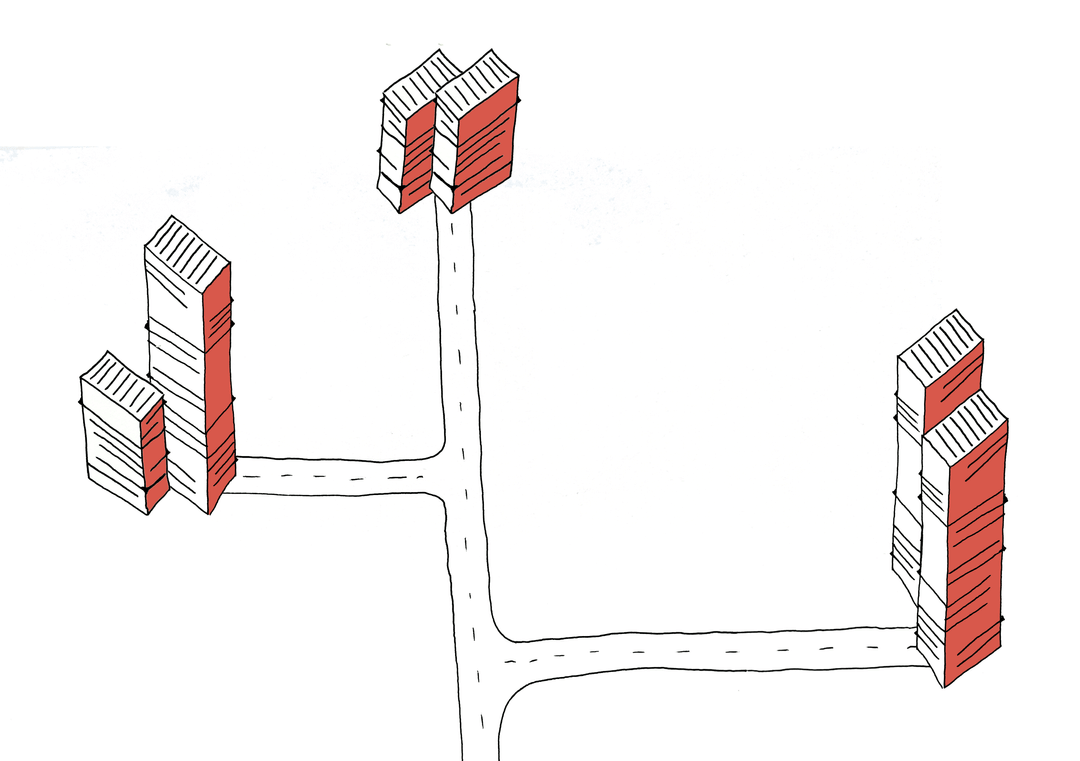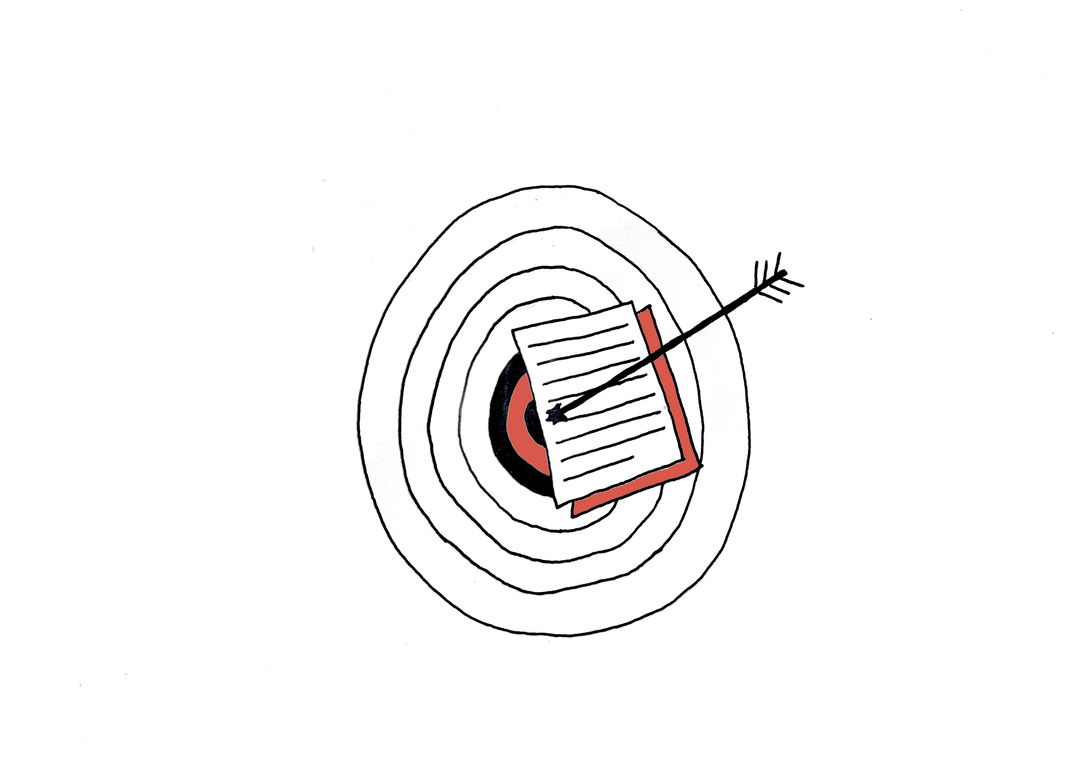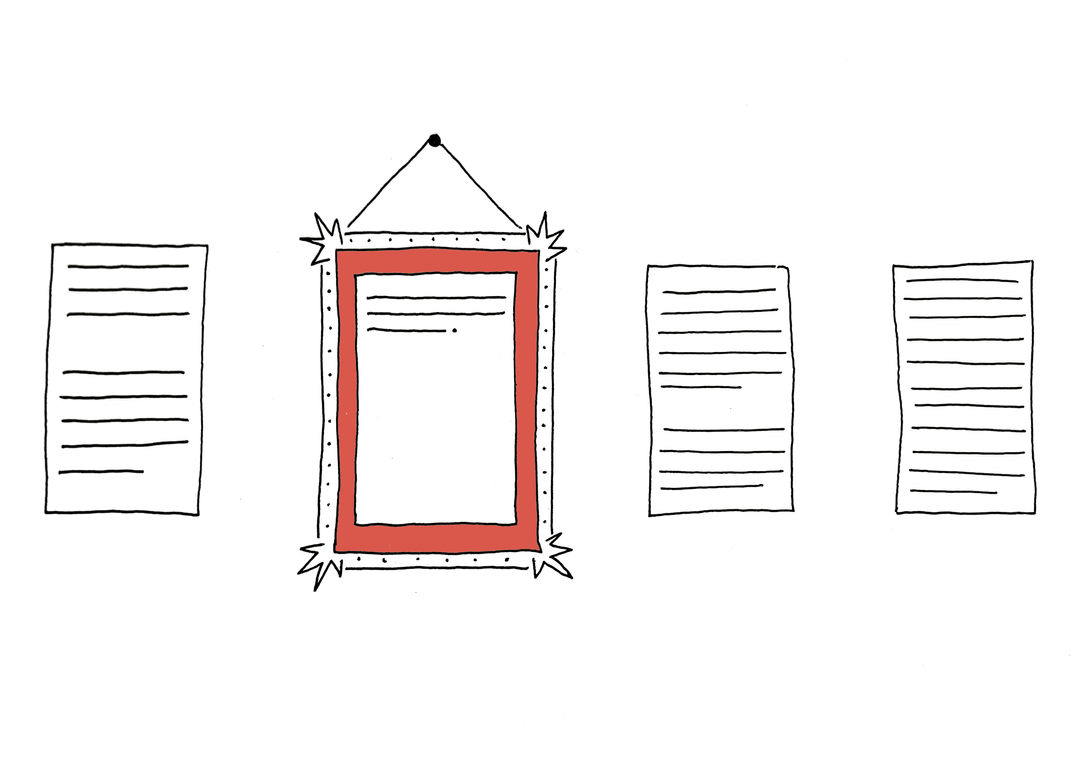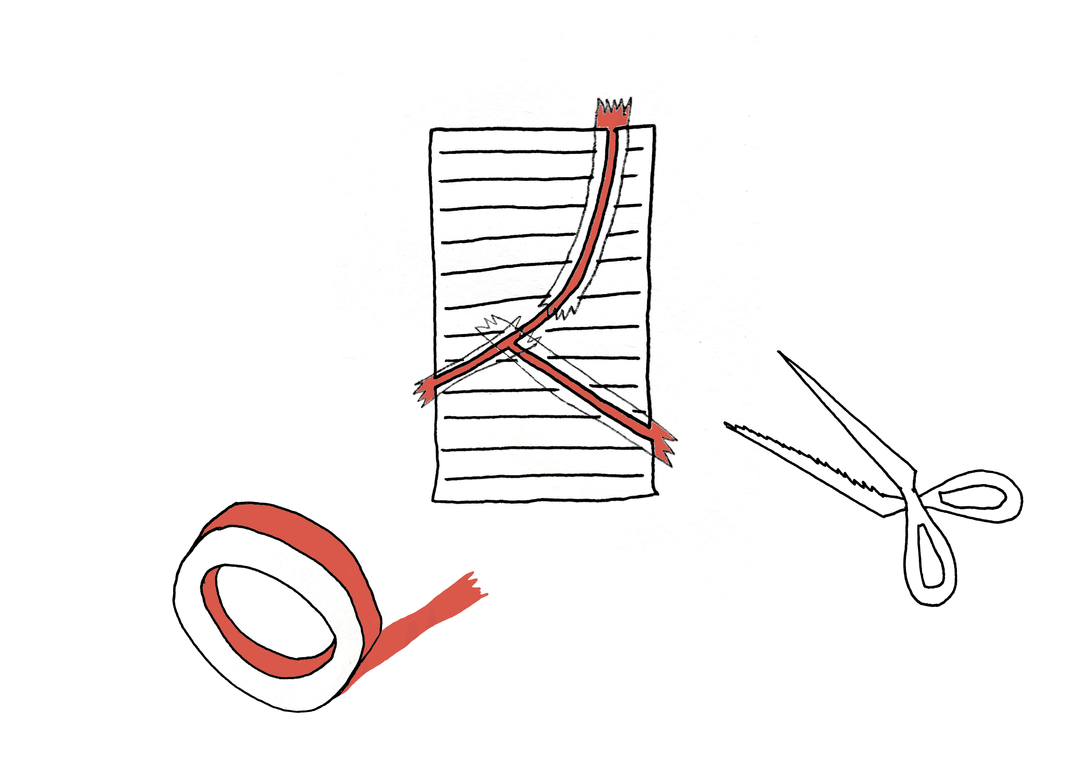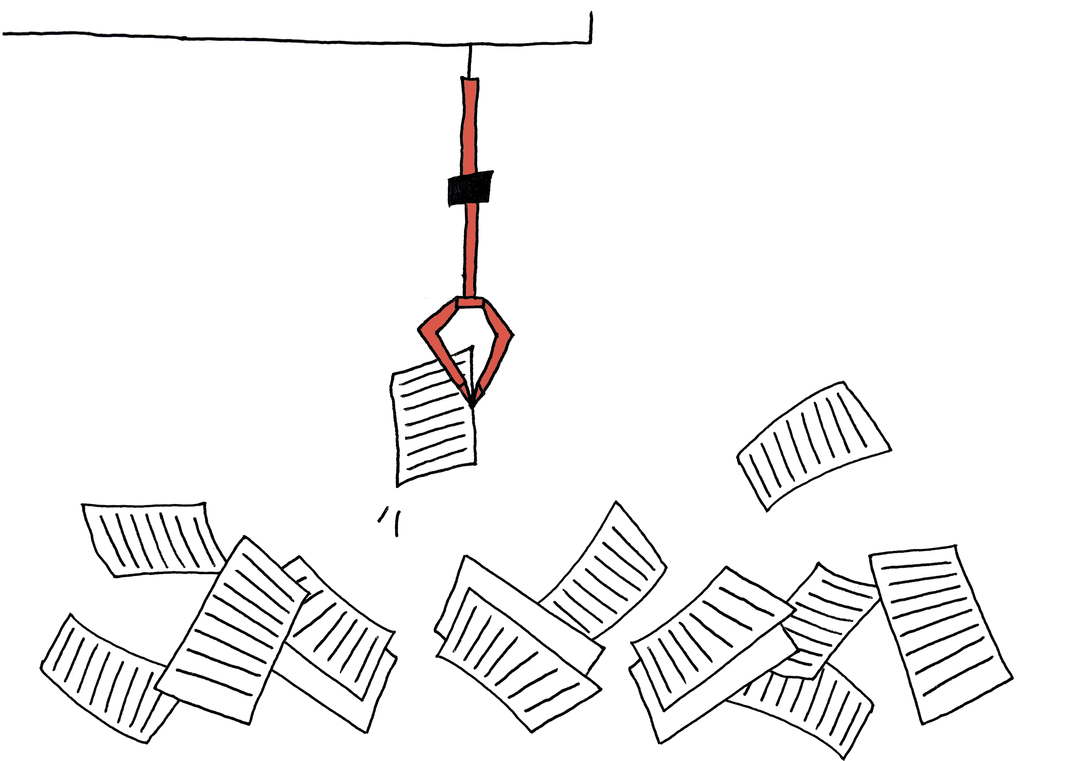Here at Briefly, we obsess over the marketing brief - the brief that clients share with their agencies.
But the creative brief (the one that agencies write in response to that marketing brief) is an equally important document.
It translates the marketing brief into a format that will inspire ingenious creative thinking. So crafting it deserves time, effort, careful consideration, and no small amount of fun.
What is a creative brief?
The creative brief is a document used to inspire and instruct a creative team to produce (hopefully) a gorgeous, compelling, and effective advertising campaign. Often, it's written by a strategist or planner at an agency, but can sometimes be the responsibility of a client if they're working directly with a creative team.
Besides the marketing brief (sometimes called the client brief), it is the most important document in the creative process.
The good news: if you follow these 11 steps, you'll be on track to deliver a great brief.
What is the difference between a creative brief, a marketing brief, and a client brief?
A creative brief is written for a creative team and is designed to direct and inspire the creative work itself. It is usually based on a marketing brief that the client has provided and written by an agency. For smaller projects or if the client is briefing a production agency or freelancer directly, they may write the creative brief themselves. If you're writing this type of brief, you're in the right place.
A client brief is the same as a marketing brief. They're written by clients and outline a new project for their agency. If you're looking to write one of those, head over to our article on 'How to write the perfect marketing brief'.
How to write a creative brief
- Name your brief and get a template
- Set the objectives
- Define the problem
- Articulate the brand or product truth
- Capture your audience insight
- Find a category truth
- Lean on a cultural lever
- Craft your key messages
- Build the strategic proposition
- Make sure to include the considerations
- Inspire the creative team
Step 1 - Name your project and get your creative brief template ready 📦
Give your brief an exciting name
This might sound simple, or even silly. But giving your brief a name is an important step.
This is how everyone will refer to this brief over the coming months. And if you don't name it, eventually someone else will. So if you want to avoid the risk that your brief might become known as the "Stinky Horrible No-One-Wants-It Brief," give it an exciting name.
Creative brief template
Templates structure all your thinking and all the information that you need to include in your brief.
If you don't already have a brief template, create your own (if you're brave) or choose one of our free, expertly crafted ones (if you're smart).
Step 2 - Set your objectives 🎯
Usually, the creative brief follows the marketing brief. And the marketing brief usually includes three objectives:
The business objective
What the company needs to achieve to improve its bottom lineThe marketing objective
What you need consumers to do (or not do) that will achieve your business objectiveThe communications objective
What you need consumers to think or feel that will achieve your marketing objective
You need to think carefully about how you frame your objective in your creative brief. It can be tempting to copy-and-paste the communications objective directly. After all, aren't creative teams trained to solve communications problems with creativity?
Yes, they are. But too often, communications objectives aren't framed in a way that most creative teams will be able to effectively respond.
Most of the time, you can get around this by rephrasing the comms objective in more human language.
For example, if the communications objective in the marketing brief looked like this...
Increase perceptions of 'Nike understands the community I live in' amongst Young Londoners by 30% by Q4.
Then the objective you might write in your creative brief could look something like this...
Get young Londoners to see that Nike understands what it means to grow up in London - and makes products that I'd be proud to wear on the streets of London.
In your creative brief, you can often sidestep some of the rigmarole of SMART objectives. These are creative objectives and KPIs that you're setting, and often too much formulaic rigour can hinder, rather than help, the process.
Step 3 - Define the problem 🧠
In a similar vein, you might receive a few problems from the marketing brief: a business, marketing, and communications problem.
And in another similar vein, you need to be considered in your approach to setting your own problem for your creative brief.
Your problem should be a direct response to the objective that you have set. Ask yourself: What stands in the way of achieving that objective?
You might get to something that looks like:
Nike has spent so long putting sports superstars in its campaign that it has lost its ability to appear relevant to young Londoners.
Step 4 - Articulate the brand or product truth ⭐️
The only question you need to answer in your creative brief here is: What is the one unique thing about the brand or the product that will be most compelling to your audience?
Sounds simple, right?
Afraid not.
This is where many arguments start between marketers and agencies (and their creative teams). Creatives often want to subdue the presence of overtly 'advertising-y' messages, and that often includes calling out product truths. Meanwhile, marketers are often focused on how every piece of advertising is driving sales of their product or service. And these two forces can clash.
So, as you're writing this section of your brief, it's important to think of how this brand or product truth can fuel a creative team's ideas, rather than shackle them.
Product truth example: Flora Plant Butter
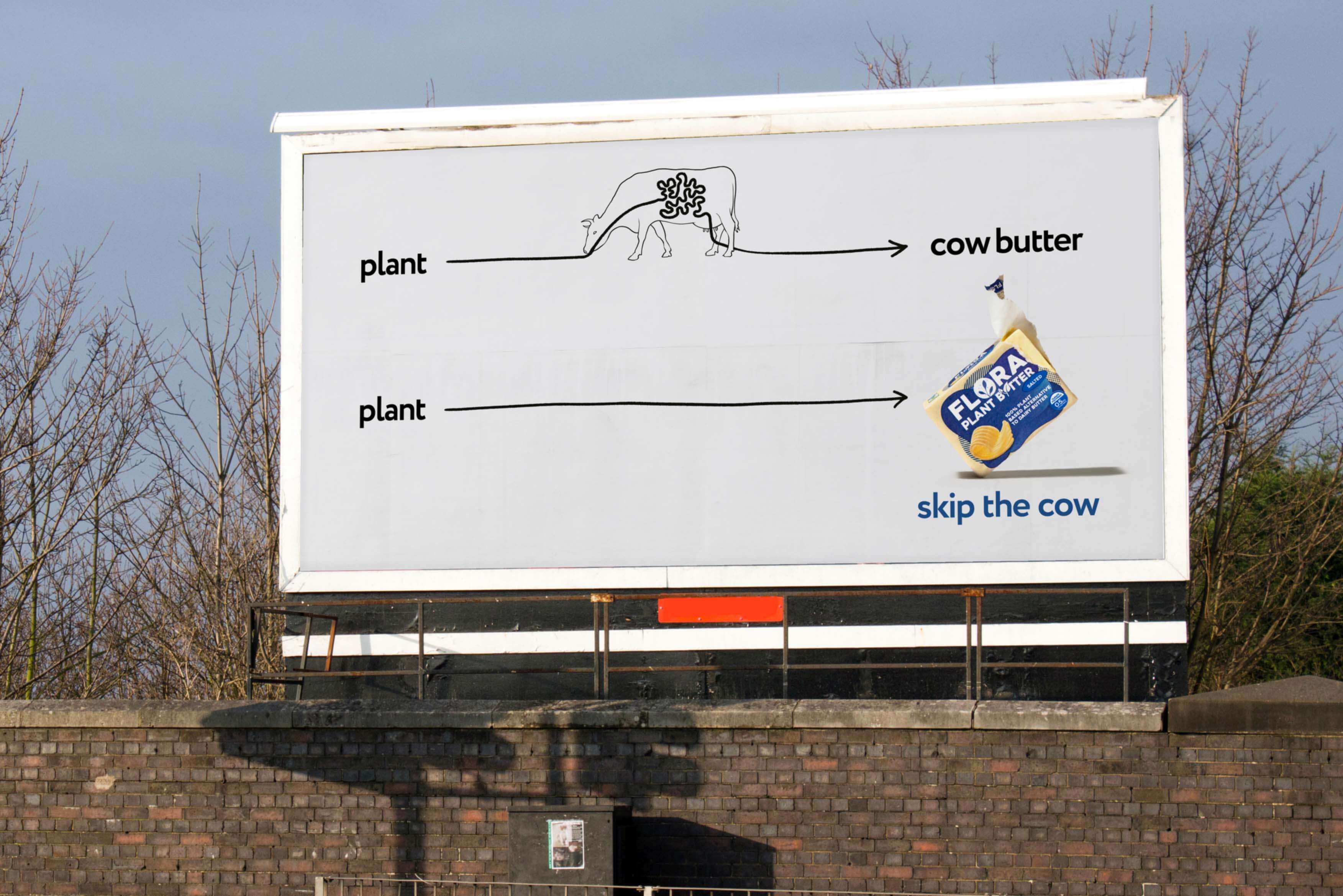
In this ad for their new plant-based butter, Flora and their agency Pablo used a product truth to create some simply brilliant OOH advertising (alongside an equally brilliant campaign). The truth that plant-based butter and dairy butter both have their origins in the same material, with some different processing in the middle, became the centre of the campaign idea.
Product messaging doesn't need to be stale and boring. Creative thinking around your product truth can lead to insightful, funny, and memorable creative work.
Step 5 - Find your audience insight 💎
Hopefully, there should be a clear target audience in the marketing brief you have received - if not, press your client for one. Or if you're a marketer writing the creative brief, spend some time thinking about who you want to target with this campaign - and read our guide on finding your target audience to help get you moving.
In a creative brief, you need to go a step further than just finding the right audience. You need to craft an insight for this audience - a key fact, piece of information, or description of them that not only makes it clear who this campaign is aimed at, but unlocks a way of talking to them.
There are lots of ways to find an audience insight, but often the most interesting and most useful in a creative brief focus on an emotional truth for their target audience:
- What are their ambitions?
- What are the problems than annoy them every day?
- What are they afraid of?
- Who do they trust?
There are a million and one questions like this that you can ask, so this part of the brief requires some careful thought and some consistent practice.
Audience insight examples
Transport for London's audience insight
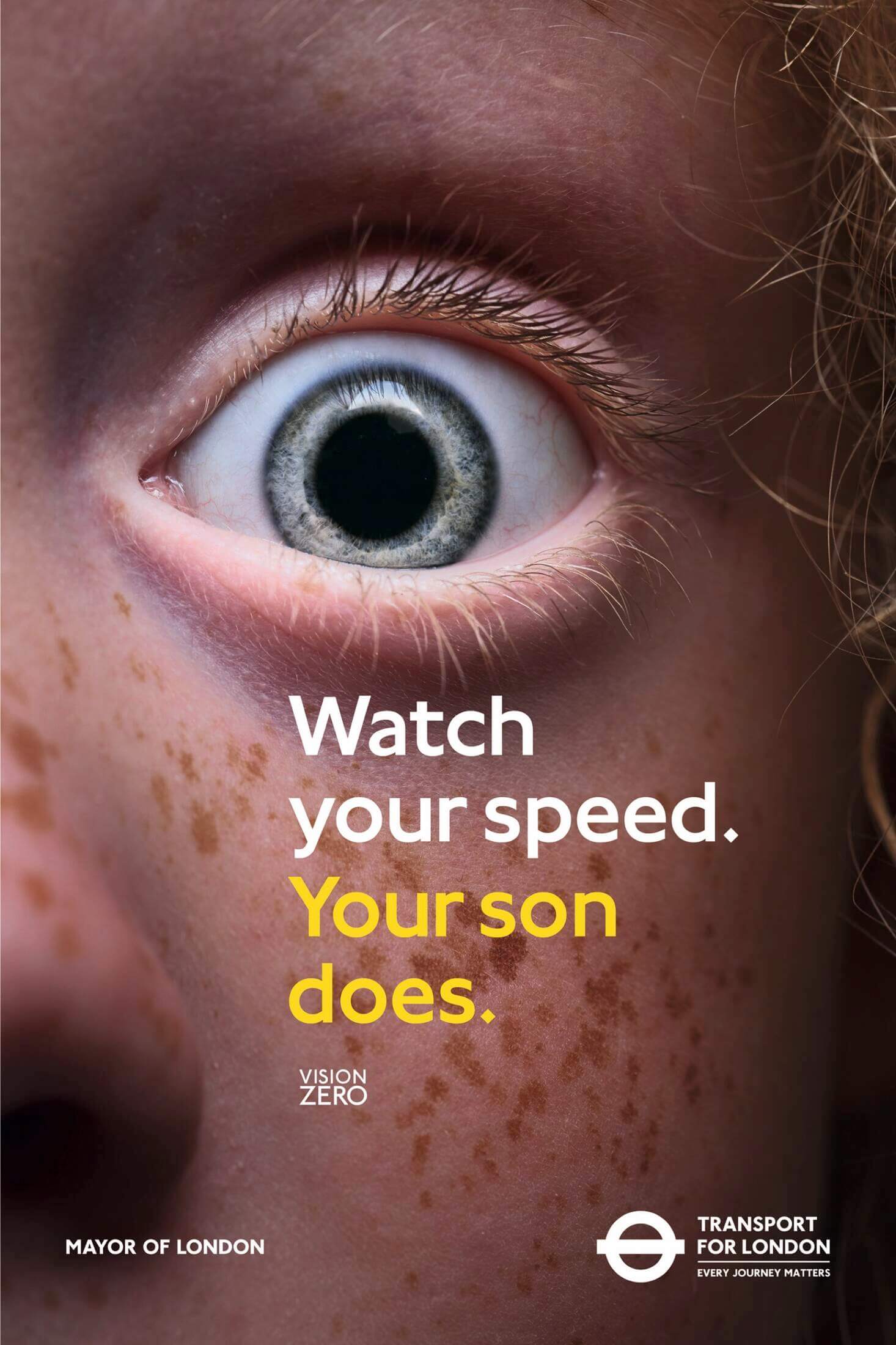
In this impactful campaign to encourage drivers to stick to the speed limit, Transport for London (the local government body responsible for most of the transport network in London) decided not to focus on the drivers themselves, but on their passengers. They recognised that drivers who speed don't care for their own wellbeing because they don't think that they'll get in an accident if they drive over the speed limit. But what these drivers do care about is the safety and wellbeing of their passengers, particularly when they're loved ones. So TfL created a campaign that tapped into this fear that their own reckless driving could not only harm their passengers, but that their passengers were constantly uncomfortable when in the car.
Spotify's audience insight
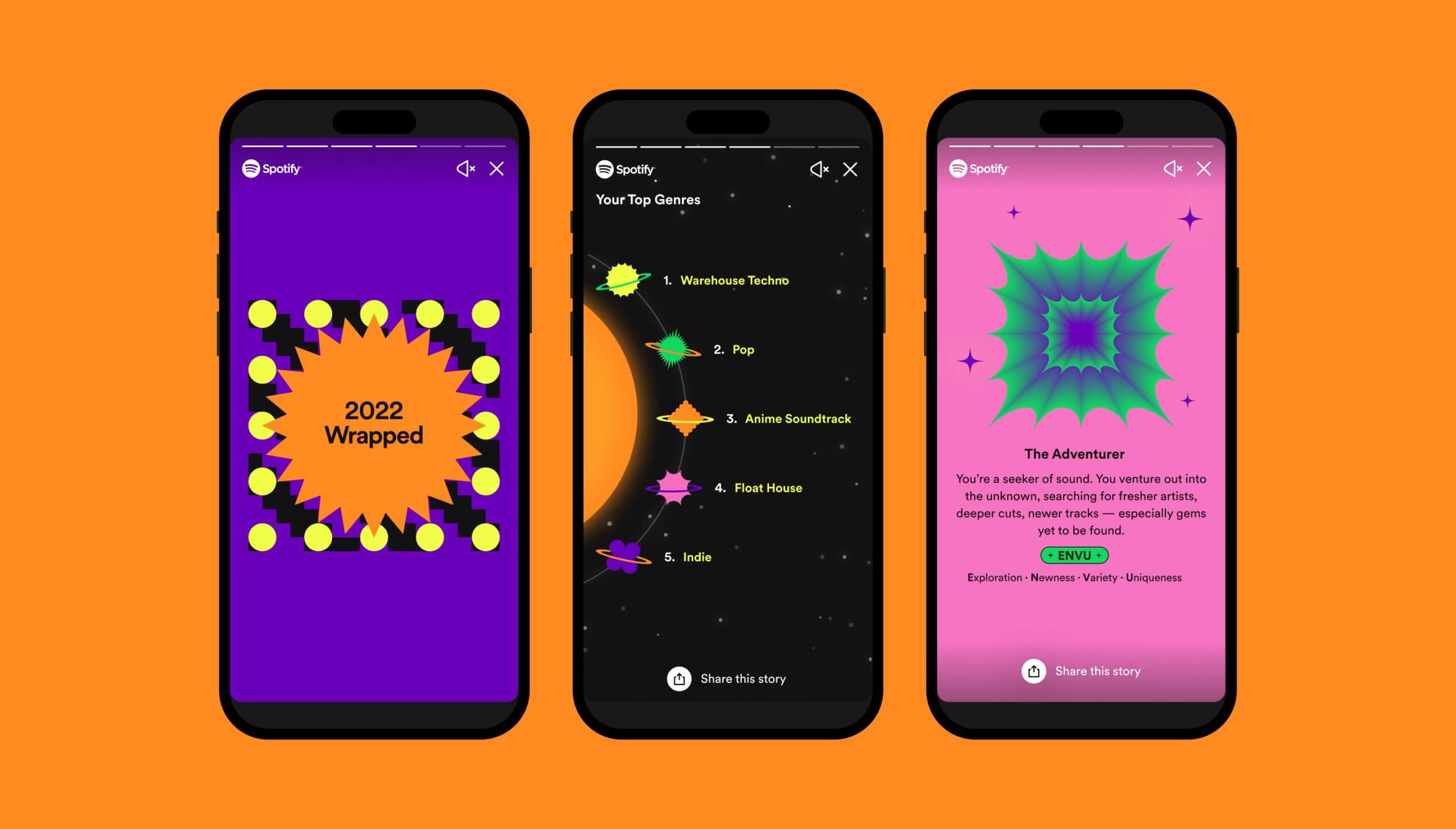
Spotify Wrapped has been a successful engagement campaign ever since it started. And interestingly, it didn't even come from an audience insight - one of Spotify's engineers realised they had lots of listening data for their users, and began coming up with some ideas for how they could put it to use. Or so the story goes.
But the reason it became such a popular campaign is that, even accidentally, it did tap into a powerful audience insight: people love to share the music they love - and they love to brag about it. Whether it's how much music they listen to, how big a fan they are of a certain artist, or how different their music taste is to everyone else, Spotify Wrapped lets people indulge in the feeling that their opinion is valid and valued (even if no one else pays any heed to their Wrapped Instagram story).
Step 6 - Define the category truth 🥸
In this section, you need to take a top-level view of the category (or industry, vertical, sector - whatever you want to call it). The idea is that if you can understand how people think about the category, and how people behave and buy in the category, then you can better influence their decisions when it comes to choosing your brand.
There are a number of ways to think about the category, but one particularly useful method is thinking about category entry points (CEPs). Pioneered by the Ehrenberg-Bass Institute, CEPs are useful ways to think about how people shop in your category. Or, according to the Institute themselves, "they capture the thoughts that category buyers have as they transition into making a category purchase".
Jenni Romaniuk states that, "Category entry points are not about the brand, they're about the buyer" - which may lead you to think that CEPs are more closely linked to audience insights. But what you need to understand about CEPs is that, even though they can vary by audience, they are universal triggers that come to mind for consumers when they are buying in your category.
How to identify category entry points
There are two broad elements to identifying CEPs:
Need state
What situation are people in when they most need a product in your category?Determining Factors
How do people quickly make decisions about which brand they choose within a category?
Need states usually exist outside of the immediate purchase moment. They tend to crop up when a consumer experiences a problem that a product within a certain category would solve. One of the most famous campaign ideas that stems from a need state comes from Snickers, who decided to own that most universal of need states: hunger.
Category entry point examples
Snickers' category entry point
Over several years, Snickers ran a campaign designed to associate the brand, a chunky, peanut-riddled chocolate bar, with hunger. Outside of the usual 3 meals, hunger striking at inopportune moments gets plenty of people feeling hangry, and as a substantial, sweet and salty snack, Snickers found a category entry point that they could claim - with no small amount of humour and advertising budget.
UberEats' category entry point
UberEats' 'Do Less' campaign focuses on a very particular and under-appreciated CEP: people order food so they can do nothing at home. So often, delivery services talk about speed and convenience. But UberEats narrowed into a key, underpinning reason why people value this convenience. When you order food to your house, chances are you've decided that you can't be bothered to go to the supermarket. But rather than sit there and mull that decision, you entertain yourself in whatever weird ways you choose when no one else is around. This boredom-inspired weirdness is a prime time to think about getting some food delivered, and UberEats created a campaign that associates that moment with their brand - and no other.
Step 7 - Find a cultural lever 🛤️
This topic deserves its own article - and we're writing one right now.
Well really, it deserves its own book (we might get there one day). Truthfully, if there was a quick way to 'read' culture and understand the massive forces that drive people and societies to do what they do and think what they think, then everyone would do it. And looking at all the advertising that sits around us, it's clear that not everyone does try to find a real cultural insight.
So where are you meant to start?
Observation
Yes, sadly, this means lots and lots of research. Talk to your consumers, talk to experts, read books and reports and surveys, study all the data you can get your hands on. But also, observe real life: pay attention to what appears on your FYP on TikTok, think about the conversations that your friends have over pints at the pub. And ask why.
The five Why's
This isn't a surefire route to a cultural insight. But this is a useful trick to start to find one. Like an annoying child who just learned the word "why", repeatedly ask yourself "why" when you observe something interesting. Five times seems to be the magic number.
For example:
- A report I read says that 50% of girls stop playing sport as teenagers. Why?
- Well, the report says that it's because of lower levels of confidence, and higher levels of negative body image amongst teenage girls. Why?
- Teenage girls are under significantly more pressure than boys their age, particularly when it comes to playing sport. Why?
- Girls are judged for more than their sporting ability - for things like their looks or their body shape. Why?
- Many sports have been dominated by the men's game, and so men's sports are seen as the 'norm' while women's sports are seen as different for some reason. Why?
Decades, even centuries, of underfunding and sexist policies have lead to a state where women in sport have to be twice as good to be seen as half as worthwhile.
From a single observation, you're able to trace your way to a significant cultural force that shapes the world we live in today. It's important to remember to verify each leap you make with more research - or else you could end up with something that logically make sense, but unfortunately has no basis in reality.
Step 8 - Craft your key messages 🔑
In a creative brief, your key messages are the things you need your audience to remember in order to land your strategic proposition (more on that in a little bit). They are based on your product and brand truth, filtered through your audience insight, and supported by your category truth and cultural lever.
🏞 Simple and jargon-free
This is a brief to a creative team, not the finished article. So you don't need to write elegant, persuasive copy for your key messages.
But, since this brief is asking your creative team to do just that, your task is to be simple - but a little provocative.
The key messages in your creative brief need to be uncomplicated, but they need to spark some creative thinking. Use expressive language, use metaphors if they're helpful. But above all, keep things clear and plain.
👉 Selective
There is a limit to how many messages someone can remember from a single ad.
Think of it like asking someone with mediocre hand-eye coordination to juggle. If you throw them one ball, they can probably throw it up and catch it, no problem. Throw them four balls, however, and they won't just drop one - they'll drop them all. The same applies to your key messages: say too much, and your audience won't remember any of it.
🔎 Supported
For each key message, indicate why the brand has a right to say this. These are called RTBs (Reasons To Believe). Don't expect your creatives to include these in the finished article, whatever that might be, but think carefully. If you're asking creatives to lie about the product (for instance, if you're trying to claim something that you just cannot support), don't be surprised when you get back some vanilla, generic messaging.
If you want to really craft your key messages, check it out our handy guide on writing a compelling set of key messages.
Step 9 - Refine the strategic proposition 🫵
We're not about to take you through the ins and outs of writing strategy. Plenty has been written on the topic, and frankly, by now, we're guessing you really just want o get on with your brief.
One of the simplest frameworks you can use to summarise a strategy is the Get / To / By framework:
- Get your target audience
- To do something that will solve your problem
- By convincing/demonstrating/encouraging/demanding/pleading/etc. that they do that thing
For example:
Get Young Londoners who don't think that Nike understands what it's like to be them
To buy and wear more Nike products on the streets of London
By showing them that Nike doesn't just get what it takes to be a kid in London - they get what it takes to thrive as a kid in London.
And that's it. That's all we're giving you. We weren't kidding - if you're here to learn how to be a strategist, you might be in the wrong place. But, for those of you who do want to learn more, check out this brilliant article by Mark Pollard about how to approach strategy.
Step 10 - Lock down the considerations 🔒
This is where you need to nail down the details. Make sure you've got the following in your creative brief:
Considerations
What do you need to say in this campaign? What can you definitely not say? What needs to be in the campaign to avoid your CMO throwing a fit?
List of deliverables
What assets do you actually need to create? Give the channels, formats and number of assets that you're expecting.
Take a look at our in-depth checklist on what admin to include in your brief in our article on the topic here.
Step 11 - Inspire the creative team 🪄
If you've followed all these steps, you should have a concise, focused brief-on-a-page.
But now it's time to think about how you'd actually brief the team.
How are you going to bring the energy? How are you going to inspire them?
Here are some ideas to turn your next briefing into an inspiring mega-session:
- Turn your one-pager into a set of slides so you can tell a real story
- Tell a real story: find real-life examples or analogies to make your brief feel more real itself
- Bring in best-in-class case studies as examples and to set the bar high for your creative team
- Take it out of the office. If you're briefing them on a Nike project, why not take them to a local basketball court?
- Please, for the love of God, don't brief them over Zoom. Do it in person.
If you need any more inspiration, we've put together a few tips on how to make your next briefing more inspiring than any you've delivered before.
Creative brief example
If you've followed all 11 steps, you should end up with an inspiring creative brief. Here's an example for a fictional sports tailoring brand:
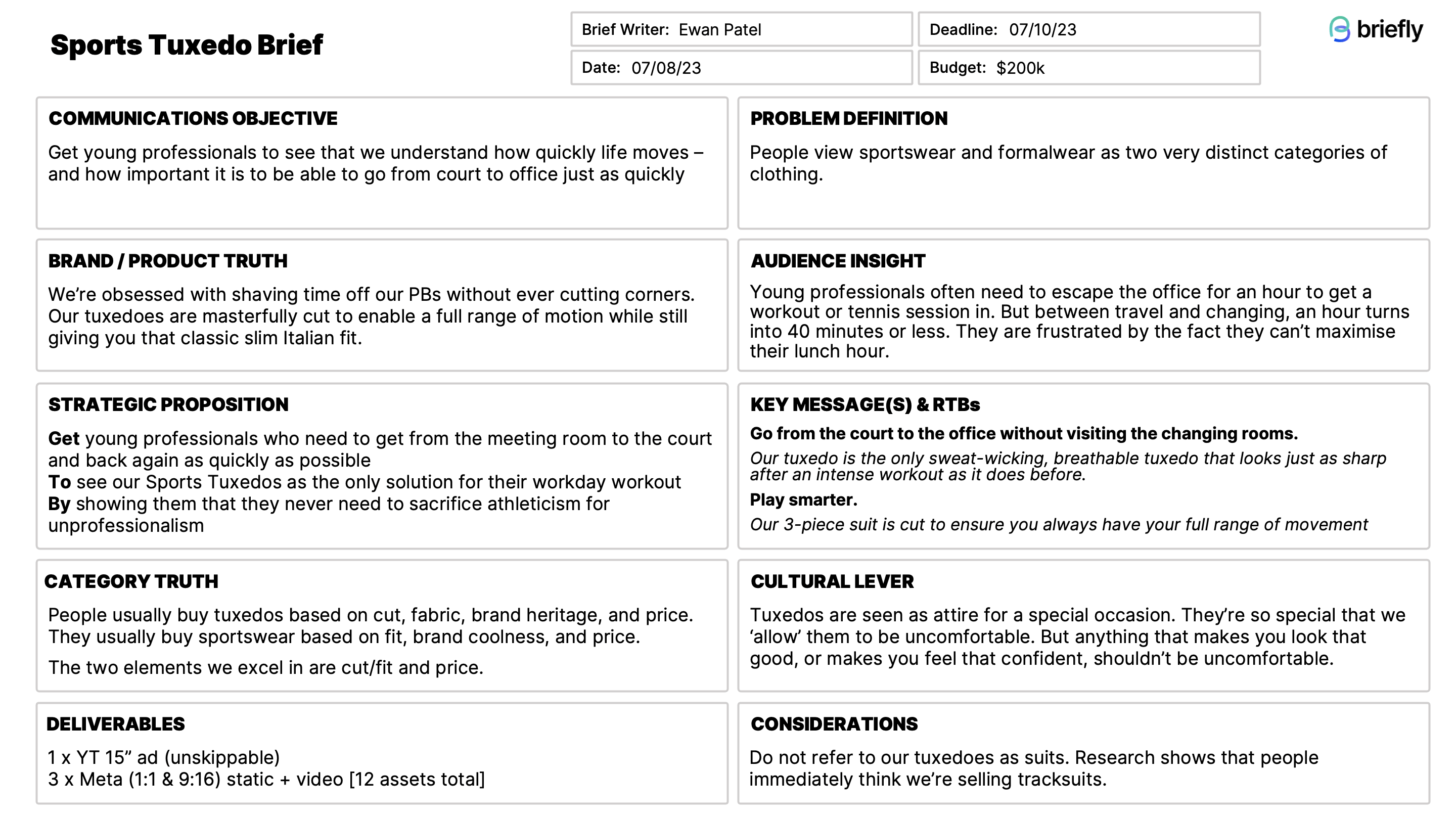
That's all it takes to craft the perfect creative brief. Now sit back, and wait for the magic to happen.*
*No actually, don't do that. As the person who has briefed the team, make yourself available to guide and help them as they work through their ideas - and to protect the strategy, and ensure they stay on-brief.
We promise that if you do all of that, you'll find that by the end of the creative process, you'll be pleased with what comes back.
Of course, if you want to make writing a great brief easy, you can always try Briefly 🌱








